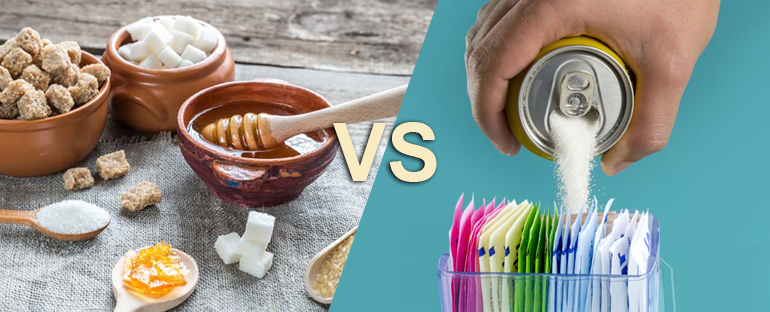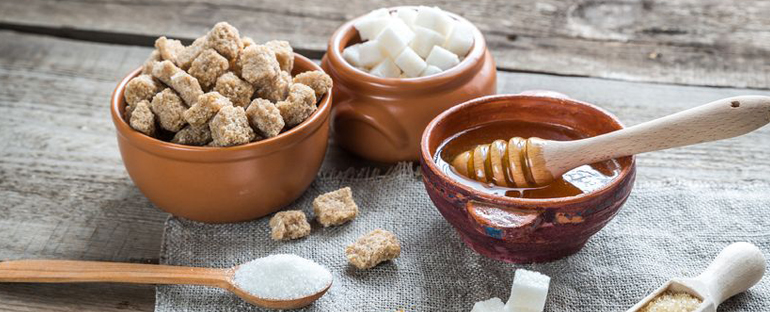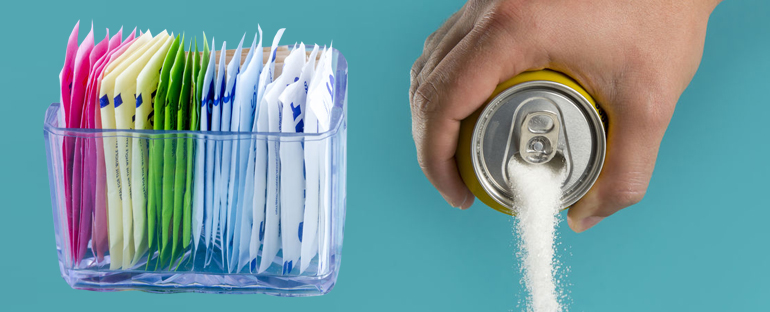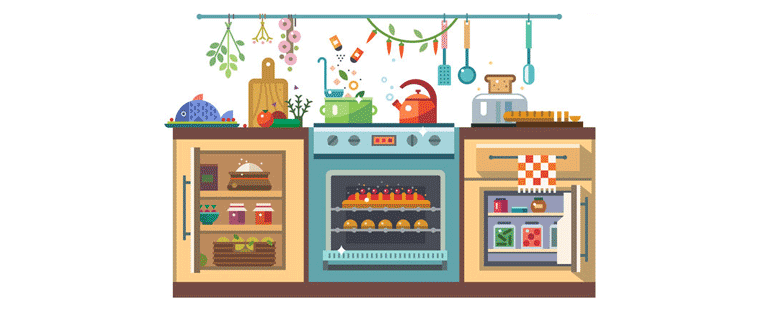
Sugar varieties: Pay attention to SWEETENERS

The origins of what we commonly call “sugar”:
Sugar has been produced since ancient times by extracting it from sugar cane. From a marginal and elitist use, in Europe since 1800 we see the spread of this product on a larger scale, thanks to the cheaper sugar derived from sugar beet. From a chemical point of view, in both cases it is the same molecule of sucrose, a disaccharide formed by glucose and fructose.
Nowadays, sugar world consumption is steadily increasing, especially as an ingredient in foods marketed by the food industry. Consider, for example, that 74% of food products in the United States contain some kind of sweetener, either caloric or non-caloric (1).
Since sugar consumption is linked to cardiometabolic health risks in the first place, the World Health Organization (WHO) recommends that it be reduced to 10% or better still 5% of total daily calories.
Where do we find sugar (also “in the undercover version”)?
In addition to the difficulty of doing without sugar, linked to the dependence that its consumption generates, it is increasingly difficult for those who want to avoid it, to find it in the list of ingredients of packaged products.
There is now a variety of chemical derivatives of this molecule, natural variants extracted from plants, sweeteners free of calories, etc. for which an explanation is necessary to get the correct information.
Classification and characteristics of sweeteners:
According to their origin, sweeteners can be classified into natural and artificial; the former are derived from plants and are usually caloric, the latter are obtained by chemical synthesis and are free of calories.
Natural sweeteners:
- natural derivatives of sugar such as glucose, sucrose, fructose.
Sucrose is found on our tables in various forms, some of which are recognizable as refined white and cane sugar (both refined and whole), but also in the form of corn syrup, glucose and concentrated fructose. In particular, among the sweeteners derived from sugars, fructose, if taken in excessive quantities, can be responsible in the intestine for swelling, pain and diarrhea. The use of fructose as a primary source of excessive sweetness may also be responsible for liver steatosis. - derived from polyalcohols (isomalt, mannitol, maltitol, sorbitol, xylitol, lactitol).
Polyhydric alcohols, sorbitol, isomalt, maltitol, mannitol, have half the calories of sucrose (2 Kcal/g), but, for the same weight, they sweeten less. Approximately one half of their intake is metabolised by the intestinal bacterial flora and, in some individuals, this can cause meteorism and/or diarrhea. It is advisable not to abuse it. Unlike sugar derivatives, their cariogenic power is lower, as polyols are not very fermentable by the bacterial flora of the oral cavity. - derived from glucosides, complex carbohydrates such as stevia
Stevioside (derived from Stevia rebaudiana) is a calorie-free sweetener that is not metabolized because once hydrolyzed by the intestinal bacterial flora forms steviol. The latter product is combined in the liver with glucuronic acid and is excreted with urine. - derived from complex caloric carbohydrates such as starch, such as maltose, maltodextrins, malt syrup, starch syrup with fructose, found in foods and beverages, but also in many supplements and reconstituents.
These sweeteners are often not recognized as such, so you are not aware that you are taking a nutrient that has a significant metabolic impact on the body.
The names of sugar can be many. Some foods, such as honey, grape juice, maple syrup, agave syrup, rice syrup, sorghum syrup contain sugar in different forms and are incorporated in many foods. Examples are: yoghurt, drinks, snacks, bread crates, ready-made sauces, cold cuts, frozen foods, breadcrumbs and sauces. For these reasons, they often go unnoticed by the consumer.
Artificial sweeteners:
Synthetic or artificial sweeteners are different and range from saccharin, aspartame, acesulfame K, sucralose and cyclamate. They usually have a much higher sweetening power than sucrose. As they fall into the category of chemical additives, they are governed by the same laws. For them, the European Food Safety Authority (EFSA) has established a safe consumption threshold that does not pose a health risk. For this reason, the control of consumption of these sweeteners is rather defined.
They are normally used by the food industry in addition to snacks, biscuits and drinks, so food and drink are free of added sugar. Although they are calorie-free, several studies on experimental models have shown their influence on the energy and carbohydrate metabolic homeostasis, appetite and delicate balance of the intestinal microbiota.
The opinion of the nutritionist
According to calorie-centred dietology, sugars are not a particular concern, provided that body weight is kept constant. In a broader and more systemic vision of nutrition, there are critical issues, derived from the ingestion of sugars, on blood sugar and cascade on hormonal mechanisms that determine, among other things, the accumulation of fat, on microbiota and intestinal permeability, on the brain system of pleasure and food addiction (for more details). On the other hand, during the course of evolution, man has developed many more hormonal systems suitable for surviving famine than for managing the continuous accumulations linked to periods of abundance, as is the case today.
The advice is therefore to limit or avoid the discretionary intake of simple sugars or sweeteners and to begin to understand where and in what quantity they are present as ingredients in the products that we find on the shelves and then end up in our plate. This will allow us to make conscious choices for ourselves and especially for those who depend on us for food and to be able, in part, to condition the supply of the type of food products.
This obviously does not mean the exclusion from our table of foods that naturally contain sugars, such as some vegetables and especially fruit, but we refer in particular to food preparations and packaged foods.
Bibliography
(1) Popkin BM, Hawkes C. Sweetening of the global diet, particularly beverages: patterns, trends, and policy responses. Lancet Diabetes Endocrinol. 2016 Feb;4(2):174-86. doi: 10.1016/S2213-8587(15)00419-2. Epub 2015 Dec 2
If you missed the article What life would be without sugar >>click here!
Article by:
Nutritionist – Dott.ssa Nicoletta Bocchino
Nutritionist – Dr. Francesco Bonucci
The diet tips, written in the article, are not intended to be a substitute for a personal nutrition plan and are to be adapted to specific cases.
Photo: 123RF Archivio Fotografico | ©ocusfocus, 87654098, 2018-10-23 | ©Teri Virbickis, 53921709, 2018-10-23 | ©Oleksandr Prokopenko, 36646261, 2018-10-23
- On 24 October 2018







